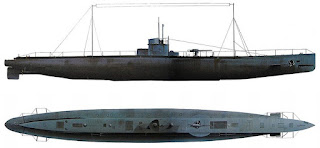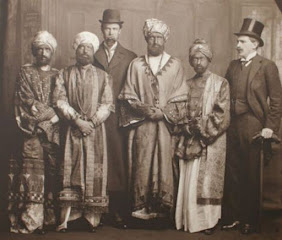Cutthroat (pronounced kuht-throht)
(1) Slang
for a murderer (regardless of chosen method) or one thought capable of murder (based on the notion of "cutting the throat" being a classic, ancient method of murder (done properly, being quick, rapid and almost silent)).
(2) Ruthless
in competition.
(3) In
games of cards where the rules permit each of three or more persons to act and
score as an individual.
(4) In billiards,
a three person game where the object is to be the last player with at least one
ball still on the table.
(5) As cutthroat eel, a family, Synaphobranchidae,
of eels found worldwide in temperate and tropical seas.
(6) As cutthroat trout (Oncorhynchus clarkii),
a species of freshwater fish in the salmon family of order Salmoniformes.
(7) As cutthroat finch, a common species of estrildid
finch found in Africa.
(8) As cutthroat razor, a reusable knife blade used for shaving hair.
(9) In linguistics, as an ellipsis of cutthroat compound (an agentive-instrumental verb-noun compound word).
1525–1535: A compound word, the construct bing cut + throat. the early twelfth century cut was from the Middle English cutten, kitten, kytten & ketten (to cut), from the Old English cyttan (related to the Scots kut & kit (to cut)), probably of North Germanic origin, from the Old Norse kytja & kutta, from the Proto-Germanic kutjaną & kuttaną (to cut), of uncertain origin but possibly related to the Proto-Germanic kwetwą (meat, flesh). It was akin to the Middle Swedish kotta (to cut or carve with a knife), the Swedish kuta & kytti (a knife)), the Norwegian kutte (to cut), the Icelandic kuta (to cut with a knife), the Old Norse kuti (small knife) and the Norwegian kyttel, kytel & kjutul (pointed slip of wood used to strip bark). Descent from the Old French coutel (knife) is thought improbable and it displaced the native Middle English snithen (from Old English snīþan (related to the German schneiden)), which survives still in some dialects as snithe. The pre-900 t was from the Middle English throte, from the Old English throtu, þrote, þrota & þrotu (throat), from the Proto-Germanic þrutō (throat), from the primitive Indo-European trud- (to swell, become stiff). It was cognate with the Dutch strot (throat), the German drossel (throttle, gorge of game (wild animals)), the Icelandic þroti (swelling) and the Swedish trut. The Old English throtu was related to the Old High German drozza (throat) and the Old Norse throti (swelling). Words with a similar meaning in the figurative sense include ferocious, vicious, savage, barbarous, bloodthirsty, cruel, dog-eat-dog, merciless, pitiless & relentless and unprincipled. The alternative form is cut-throat although dictionaries note the rare use of cut throat. Cutthroat is a noun & adjective; the noun plural is cutthroats.
You're wrong.—He was the mildest manner'd man
That ever scuttled ship or cut a throat:
With such true breeding of a gentleman,
You never could divine his real thought;
No courtier could, and scarcely woman can
Gird more deceit within a petticoat;
Pity he loved adventurous life's variety,
He was so great a loss to good society.
Don Juan (1819–24) canto III, stanza XLI, by Lord Byron (1788–1824)
The cutthroat trout (Oncorhynchus clarkii) is of the family Salmonidae and is native to a number of North American cold-water tributaries of the Pacific Ocean and Rocky Mountains. The common name "cutthroat" is derived from the coloration on the underside of the lower jaw. Despite the use of the name, not all cutthroat trout instantly are recognizable. Coastal cutthroat trout occur as sea-run or freshwater-resident forms in streams and lakes in a coastal range from lower south-east Alaska to Prince William Sound and are the most common trout species in the region. What was noted as early as the 1950s was a lack of a distinct red slash mark in some sea-run and lake-resident forms which meant easily they could be confused with rainbow trout and although a positive identification was possible because (unlike the rainbow) the cutthroat is marked by the by the presence of minute teeth between the gills behind the base of the tongue, that obviously demanded close inspection. That cutthroat trout and rainbow trout often share the same habitats does lead to occasional hybridization (the mating producing fertile offspring) which can make identification challenging as the hybrid fish are intermediate in appearance.
The “cutthroat compound” is one of the more recent additions to the jargon of structural linguistics, the term in 2015 coined by historical linguist Brianne Hughes to describe a compound word formed from a transitive verb followed by a noun that is the object of that verb and the form is self-referential because “cutthroat” is such a form. According to Ms Hughes’ analysis, although her research revealed some 1350 have from time-to-time been created, in Modern English, fewer than three dozen remain in common use, the most frequently heard being “breakfast” (the meal that “breaks the fast” since dinner, supper, midnight snack or whatever was one’s last meal). She listed some which have survived to appear occasionally (swashbuckler, sawbones, and skinflint) but, being a historical linguist it was the “fun” ones which caught her eye and these included “catch-fart” (a footboy or servant who follows too closely behind his master, “hugmoppet” (an overly-affectionate old woman), “lackbeard” (a young man) and the hopefully metaphorical “lickspittle” (a toady or yes-man, base on the imagery of “one who licks up the spittle of another”. More familiar are “daredevil” (one who “dares” the devil (ie takes great risks, tempting the devil to “take them to Hell”), “scarecrow” (used to “scare away crows”, “spoilsport” (one who ruins the fun), “turncoat” (one who changes their allegiance), “breakwater” (something that diverts or breaks the force of water) and “pickpocket” (one who “picks pockets”). At the margins, deconstruction can be challenging: Is a dreadnought (1) an individual with a dread of nothing or (2) an individual who does but dread? As the Royal Navy knew, it was the former and Admiral of the Fleet Jackie Fisher (First Baron Fisher, 1841–1920; First Sea Lord 1904–1910 & 1914–1915), the figure most associated with the epoch-making HMS Dreadnought (1906), when raised to the peerage, choose as the motto on his coat of arms: “Fear God and dread nought”. Much the old salt would much have preferred the punchy “cutthroat compound” to the academic textbook term in the linguistics literature: “agentive and instrumental exocentric verb-noun compounds”.
There are also surnames which are cutthroat compounds (William Makepeace Thackeray (1811–1863); Ada Lovelace (1815-1852) & William Shakespeare (1564–1616) and the constructs appear also in other languages, the French amuse-bouche a small appetizer meant to “amuse one’s bouche (mouth)” (ie taste good). As a device, the technique was in Romance languages a common way to form agent nouns but use was rare in Germanic languages (which use the suffix “-er” or its homologues). The increase in the appearance of the pattern in English after the Norman Conquest (1066 and all that) was a consequence of French influence and linguistic anthropologists believe this reflected sociological factors: forming agent nouns in this way for despicable or derisible agents (such as cutthroat and turncoat) was apparently one way the English could mock both the French and those English folk who had become “affected”, speaking French and acting “more French than the French”.
































